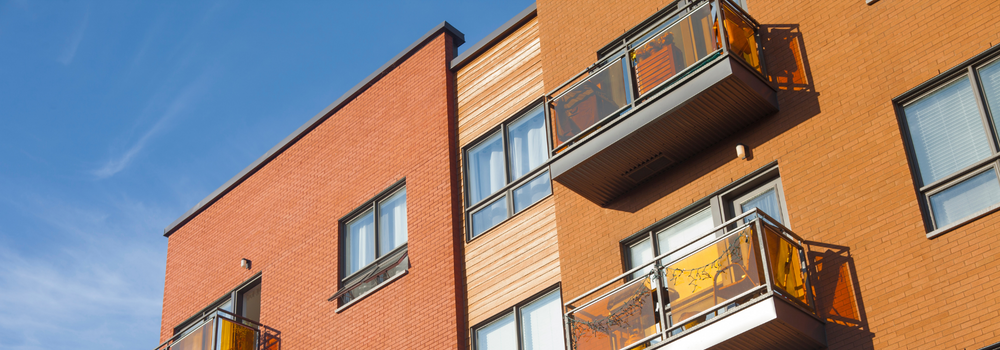The BtR paradox: part 1
- Data-driven Build-to-Rent marketing: a reflection on past, present, and future strategies.
- What data tells us about the future of Build to Rent.
- Maximising ROI on marketing spend and lowering the cost of acquiring residents.
- Resident acquisition in a post-Covid market: is your business ready?
In 2019, we published an article detailing the traditional approaches to solving what we called ‘the PRS paradox’, which is essentially the challenge faced by Build-to-Rent (BtR) operators who need to ensure that units are let to quality residents at speed while also maintaining their expected revenue per unit.
In 2020, the global pandemic accelerated existing market trends and in the process confirmed our central thesis: current lease-up strategies simply aren’t effective. Whether schemes rely on the in-house approach or instruct a traditional lettings agent to lease up a vacant building, current operating models cannot deliver at either the speed or scale required to meet occupancy targets.
With that in mind, and a difficult market providing a further impediment to lease-up efforts, now is an excellent time to revisit the PRS (now BtR) paradox. While the original piece primarily focused on the different operating models seen widely across the sector, this series will take a closer look at the lease-up methods and strategies relied upon by providers within those frameworks. We will also provide some unique market insights and long-term solutions for key investor objectives.
Over the coming weeks, we will be exploring:
- The geographical scope of marketing coverage, how this impacts lease-up strategy, and the inadequacies of the traditional agency and in-house models.
- A look back at 2020 and how the landscape has changed. Supply, demand, seasonality and pricing - what you need to know to shape 2021 strategies now.
- The operational challenges of managing the speed and scale required to improve leasing velocity and cost management.
- Dynamic pricing and long-term strategies for value creation.
In this first article, we explore the limitations of traditional marketing media in a digital marketplace and outline proven, *CAC-friendly alternatives to help schemes access the widest audience of potential residents.
*CAC = cost to acquire a customer.
Market backdrop
Before we dive into the main analysis, it is useful to review the current market backdrop and the challenges operators face when trying to lease up a new development. Unfortunately, we are entering 2021 with the toughest residential lettings market in London since the 2008 financial crash.
The Covid-induced pandemic has had a seismic impact on both supply and demand in cities across the UK. Data released by Rightmove this month reveals that average asking rents in inner London are down by an average of 12.4% year-on-year, with the number of properties in central neighbourhoods listed on their portal having more than doubled.
There are several reasons why demand is on the decline while supply skyrockets:
The Covid exodus
There has been an exodus of young renters out of the city centre over the past 12 months. Many white-collar professionals have relocated by choice, as flexible working practices allow them to reduce their cost of living by moving out of expensive prime central properties to affordable homes outside of the city. Across the rest of the UK, while asking rents in city centres have taken a substantial hit, agents operating away from city centres are reporting a sharp uptick in local activity and rising rents.
Others have been forced to leave as job losses, and other pressures on income, have compelled them to move back in with family members or relocate elsewhere to find work. The most recent ONS figures indicate that unemployment has risen to a five-year high of 5%, with 1.72 million out of work. This had led many to either downsize or exit the private rented sector altogether. With many millions of workers still furloughed, unemployment will remain grim for some time yet.
Faltering engines of demand
Many of the major engines of demand for BtR properties have sputtered to a halt due to the ongoing pandemic. With major restrictions limiting our ability to travel freely across international borders, there has been a total collapse across the student let, corporate relocation, and overseas markets. Though global progress in developing and distributing effective vaccines provides cause for hope, the number of passengers traveling through Heathrow airport in December 2020 was down an astonishing 83% compared with the previous year. This disruption looks set to continue for some time.
The total collapse of the international tourism industry has led to many short-let landlords (using platforms such as Airbnb) to migrate their stock into the residential market. These properties are often advertised at heavily discounted asking rents as distressed holiday rental operators seek to mitigate losses. This accounts in large part for the increase in the supply of rental stock in prime central locations and subsequent downwards pressure on pricing.
Compounding the challenge facing BtR operators are the consequences of Britain’s exit from the single market, the full impact of which is yet to be revealed. Many large financial service firms in The City have already begun to relocate part of their operation to the EU bloc, with Barclays having moved £166bn of its assets to Ireland, and Lloyds of London transferring all of its operations across the EEA to its new hub in Brussels. While it is too early to predict the scale of disruption Brexit will cause to BtR renter demand, early signs indicate that there is likely to be a sustained adverse impact on the corporate and overseas market.
The strong headwinds generated by this combination of factors pose significant difficulties for operators in the early stages of their development’s life cycle. It is therefore essential to interrogate current common lease-up strategies and tease out the reasons exactly why they aren’t effective, while also searching for alternatives that will help schemes start securing bulk move-ins even in unfavourable market conditions.
Traditional marketing media in a brave new (digital) world
The problem
As we mentioned in our original article, operators that opt for an in-house marketing model during the lease-up cycle rely heavily on forms of above-the-line advertising on the tube, in newspapers, outdoors etc. This form of marketing has its uses for building brand recognition, but has very little value when it comes to driving enquiries on units in a new building. There are several limitations to this approach both in general and specifically as a strategy to lease up a development.
- It is very difficult to establish ROI with forms of mass media (a separate problem of its own), but in general it is very unlikely that this method will achieve the desired returns. No matter the quality of the content, the advert will be irrelevant to the overwhelming majority of its daily audience.
- Expensive mass media advertising increases resident acquisition costs to an unsustainably high level.
- With the declining relevance of traditional forms of mass media advertising already diminishing the potential ROI prior to the current pandemic, Covid restrictions currently render many forms of above-the-line advertising entirely redundant for lease-up purposes.
- Above-the-line marketing is built for brand recognition, not conversions. Nebulous brand awareness among a general population won’t lead to many tenancies.
The last point is particularly salient in current circumstances. It’s risky to expend considerable resources on forms of untargeted advertising even when you have huge exposure, but if the audience is large enough then even a relatively low level of engagement will yield at least some marginal value. If there is no audience at all, it’s an exercise in futility.
In the summer, when restrictions were relatively loose, footfall in London’s city centre recovered to only 30% of typical levels. Meanwhile, daily usage of the tube network at the beginning of the current lockdown stood at just 18% of the normal number of journeys. In short: nobody is around to look at your physical advertising presence.
The BtR sector is especially vulnerable to diminishing returns with a marketing strategy that heavily relies on forms of above-the-line advertising. An analysis of BtR occupancy recently published as part of a collaborative study undertaken by the BFF, London First, and the UKAA found that, among residents in London, the most common employment sectors were as follows:
- Financial and insurance services (25%)
- Other varied service activities - such as journalism, recruitment consultancy, and legal professions (23%)
- IT and communication, media, and advertising (15%)
More than half of London’s current BtR residents are employed in higher-wage professional service roles, the kind of jobs most easily adapted to home working. With flexible working here to stay for the foreseeable future, and likely permanently in some form or other, schemes will need to find new strategies for reaching the largest pool of potential residents during lease up.
The solution
The most reliably successful marketing strategy for leasing up a building is a through the line approach that leverages multiple digital channels to achieve a wide reach across targeted relevant audiences. While this approach will net fewer overall views of your various campaigns than above-the-line mass advertising, it is far better optimized for conversion and will source many more renters. Crucially, this approach is also much kinder to your CAC by utilising a combination of both (cheaper) paid and organic marketing.
The opportunities across different digital marketing channels are profound. Predictably, social media usage and the consumption of all forms of online content has increased significantly during a year of rolling confinement:
- 1 in 3 adults in the UK now watch more online video than they do on traditional television.
- Adults spend an average of 4 hours a day online.
- Social media users spend an average of 2 hours and 24 minutes per day engaged with an average of 8 separate social networking and messaging apps.
- 43% of internet users are spending more time on social media and 36% are spending more time on mobile apps.
In addition to the conventional online listings portals, social media and other online channels can be utilised for proactive demand creation that both builds your brand and turbocharges your lease up.
The property industry lags considerably behind other sectors when it comes to seizing the opportunities presented by digital media. Very few traditional agents currently offer a viable alternative to current inadequate lease-up marketing strategies. For an example of how an alternative works in practice, we can explore the Home Made approach in more detail.
Modern, data-driven marketing
Over the course of 2020, we engaged with 136,342 renters in London and achieved a 780% increase in traffic to our own property search page. This was driven in large part by the fact we are operating across more than 45 different digital channels to create inorganic demand for our properties.
While the online presence of many traditional agents doesn’t extend much beyond the major listings portals, we utilise paid social media campaigns, secondary listings portals, organic social media campaigns, SEO-driven content optimized for strategic keywords, and various targeted paid advertising campaigns to actively reach out to renters where it is easiest to find them.
Many operators with in-house marketing teams will, of course, already be running a through-the-line approach that incorporates social media and online advertising. However, without an effectively targeted strategy these campaigns will yield a similarly low conversion rate to above-the-line advertising.
At Home Made, we operate with a ‘growth mindset’ approach to property marketing. We use the vast number of data points we gather due to our city-wide coverage to get the most detailed profile possible of our audience. We constantly test messaging across more than 45 bottom-of-the-funnel conversion channels with dedicated demand growth specialists.
These conversion channels come with a diverse range of costs, but with data-driven insights and a focus on constant testing for optimization, we get the maximum ROI from the best combination of portals (which won’t be the same for each development). This growth mindset, built for high conversion, is an excellent complement to traditional in-house approaches that focus more heavily on building a brand.
Here is a breakdown of our where our property enquiries come from:

As you can see, social media and our website content accounts for 30% of our enquiries and provides an invaluable supplement to more conventional methods of property marketing. By using multiple channels in addition to the major listings portals, it is possible to expand the size of your audience while also targeting your efforts towards renters who are most likely to be interested in your development.
To adapt your lease up efforts to the post-Covid world, divest from forms of expensive and increasingly ineffective mass media marketing and focus on building and funding a formidable digital strategy instead.
We are, as always, here to help and if you want to speak to us about how we can support the lease-up of your scheme get in touch with Jo Green for a bespoke proposal.
Check out more of our articles here and follow us on Twitter, Linkedin, Instagram, and Facebook for regular insights on the industry, market news, and company updates from Home Made.




